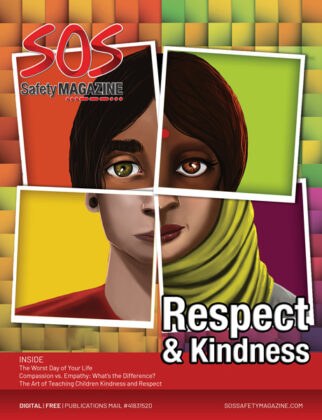ARTICLES, HEALTHY LIVING & WELL BEING. EATING DISORDERS, I NEED HELP: TEEN SUICIDE PREVENTION
Self-Harm Isn’t Just Cutting


Self-harm is a way that people deal with deep emotional pain. Some say it’s a way for them to feel in control when everything else is spiralling out of control. Others say that feeling pain is better than feeling nothing at all. For other people, they are trying to blur the lines between physical and emotional pain. Whatever the reason though, when you think of self-harm you usually think of the following:
- Cutting or deeply scratching the skin.
- Burning or scalding the skin.
- Hitting or banging of the head against hard objects.
- Punching, or throwing the body against hard objects.
- Poking, or puncturing the skin.
- Ingesting poisonous substances, or objects.
Self-harm includes anything you do to intentionally cause yourself pain. The methods listed above are obvious ways of causing physical pain, but self-harm can be more subtle than that. Subtle ways people harm themselves include:
- Preventing a wound from healing on purpose.
- Driving recklessly.
- Binge drinking.
- Taking too many drugs.
- Unsafe, casual sex.
These behaviours are some examples of self-harm that don’t cause physical pain. If you engage in these behaviours, you might not even think you’re self-harming. However, these self-destructive activities are often the only way that you can cope with intense emotions like self-loathing, rage, emptiness, or guilt. Without thinking, you’ll find yourself acting out in these ways to express or distract yourself from difficult feelings.
Consequences of self-harm.
The relief that comes from self-harm lasts only a moment and the problems that follow run deep. Using self-harm as a coping mechanism prevents you from learning better and more effective strategies. Also, keeping your self-harm a secret is difficult and lonely. You might think no one will understand, but keeping it to yourself is a heavy burden and can affect your relationships.
Even if you don’t mean to seriously hurt yourself, you can easily cause severe damage. Even if you think your behaviours are relatively harmless (Drinking, casual sex, etc.) you can cause lasting damage to your body. Additionally, you put yourself at serious risk for addiction. What may have started as a way for you to feel in control will quickly turn the tables and control you.
How to stop self-harm.
1: Tell someone.
If you’ve recognized that you are self-harming, and you would like to stop, the first step is to say something! It might scare you to talk about something that you’ve tried so hard to keep a secret, but when you let someone else help you carry your burden, you’ll feel so much lighter. Here are some tips to keep in mind when you’re talking to someone about your self-harm:
- Talk about your feelings. Instead of giving detailed accounts of your self-harm, talk about the feelings or the situations that led up to it. This will help the person understand where you are coming from, and not overwhelm them.
- Talk in a method that makes you comfortable. If you find that the conversation is too difficult to have in person, and therefore you are putting it off, send a text! Or an email. Or a letter. It really doesn’t matter how you start the dialogue — just that you do.
- Allow space to process. When you let someone see this side of you, it can be shocking, overwhelming, or saddening. So give whoever you tell a moment to breathe and take it all in. Try to remember that if they react in shock or anger — it’s out of concern for you.
2: Identify your triggers.
This is a very important step in recovery. If you know what sets you off, you can learn to avoid those situations or adequately prepare yourself. Additionally, you can figure out which needs your self-harm is meeting and discover more effective ways to meet those needs.
Self-harm is a temporary way to deal with emotional pain, so what emotions cause you so much pain you need to use self-harm to escape? If you can’t pinpoint what you feel that makes you want to self-harm, practice emotional awareness. One way to do that is to practice identifying emotions as you feel them, without trying to fix them. When you feel something, name it. Say to yourself “I am feeling ____.” It might be tempting to add a “because” — but that can only serve to justify and intensify your emotions. Just leave it at a name, and take a few deeps breaths.
It might scare you to pay attention to your feelings instead of immediately numbing them — and the journey will be an uphill one. However, if you don’t try to justify, judge, or criticize yourself for feeling a certain way, you’ll often find that the feeling fades.
3: Develop new habits.
If you want to stop using self-harm as a way to cope with unpleasant emotions, you need to develop new habits.
For example: if you use self-harm as a way to express pain: Try painting, or journaling, or composing, or listening to music that expresses what you’re feeling.
If you use self-harm as a way to calm and soothe yourself: Take a warm bath or shower; cuddle with your pet; wrap yourself in a warm blanket; massage your neck, hands, or feet; listen to calming music.
If you self-harm because you feel disconnected and numb: Call a friend (talk about anything); take a cold shower; chew on something with a strong flavour.
If you use self-harm to vent: Exercise vigorously; punch something soft; squeeze a stress ball; rip up something (like sheets of paper); make some noise.
There are many things that you can do to deal with difficult emotions that don’t cause lasting bodily harm.
4: Ask for help.
Do not do this alone! Find a mental health professional who can guide you through the healing process. They will teach you, and hold you accountable. It might take some effort to find the right therapist. They should accept your behaviour without condoning it, they should make you feel safe, they should push you to improve — but at your own pace.
Allow people to walk alongside you in your journey to recovery. This is the only way you can stop self-harming forever and learn to confront the emotions that drove you to such a dark place.
Sources:
Self-Harm, It’s Not Just Cutting
The Behavior I Didn’t Realize Was Actually Self-Harm
Self-Injury Is Not Just Black or White







